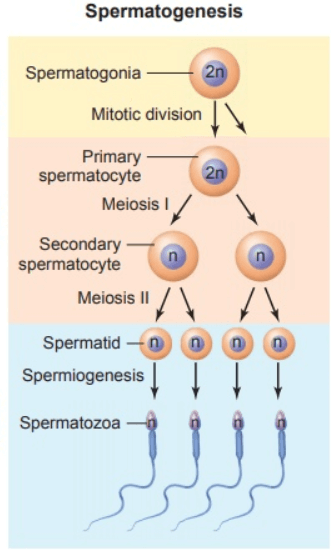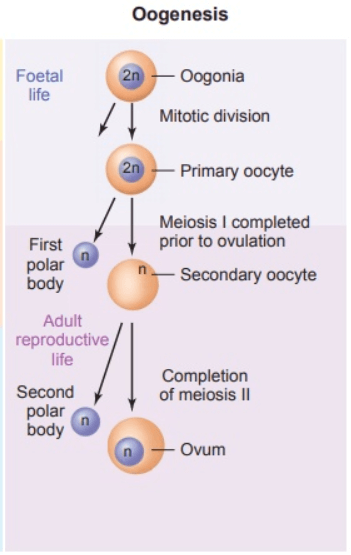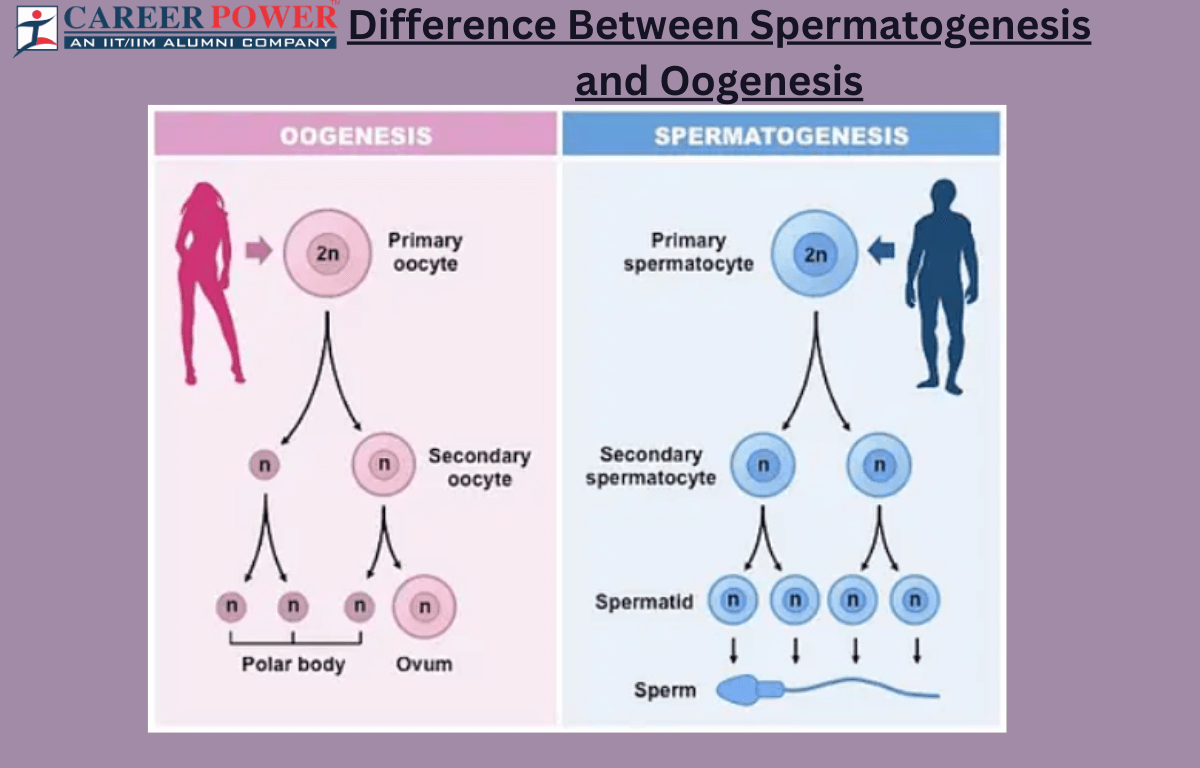Gametogenesis is one of the important topics in Biology. Gametogenesis is the process by which specialized cells, called gametes, are produced for sexual reproduction. In humans gametogenesis occurs in the gonads – testes in males and ovaries in females. Spermatogenesis and oogenesis are the two different processes through which male and female gametes, respectively, are formed. Here we have mentioned a few differences between spermatogenesis and oogenesis below in the article.
Spermatogenesis and Oogenesis
Spermatogenesis and Oogenesis are the processes by which male and female organisms, respectively, produce sex cells (sperm and eggs) for Sexual Reproduction. Both the processes of spermatogenesis and oogenesis are essential for sexual reproduction, ensuring the production of vital sex cells that can unite during fertilization to create a new organism.
What is Spermatogenesis?
Spermatogenesis is the process by which male germ cells, called spermatogonia, undergo multiple divisions to develop into mature sperm cells known as spermatozoa. Spermatogenesis is a complex biological process that occurs in the testes, specifically within structures called seminiferous tubules, and results in the production of four functional sperm cells. Spermatogenesis starts with the division of spermatogonia. These spermatogonia undergo a series of mitotic divisions to produce primary spermatocytes. The mature sperm cells carry genetic information and are used in fertilization during sexual reproduction.

What is Oogenesis?
Oogenesis is the process by which female germ cells called oogonia develop into mature egg cells, also known as ova or oocytes. Unlike spermatogenesis in males, oogenesis in females is asymmetric, a more complex and drawn-out process, resulting in the production of one mature egg and several smaller polar bodies, which do not participate in fertilization. The process of Oogenesis begins before a female is born and continues throughout her reproductive years. Oogenesis is a crucial biological process that ensures the production of visible egg cells, allowing for sexual reproduction and the continuation of a species.

Difference Between Spermatogenesis and Oogenesis
Spermatogenesis and Oogenesis are the processes by which male and female gametes (sperm and eggs, respectively) are produced, and they differ in several key aspects. These differences reflect the specialized roles of sperm and eggs in sexual reproduction, where sperm are optimized for mobility and fertilization, while eggs contain the necessary nutrients and cellular machinery to support early embryonic development.
| Difference Between Spermatogenesis and Oogenesis | ||
| Aspects | Spermatogenesis | Oogenesis |
| Location | Testes (in the seminiferous tubules) | Ovaries (in the follicles). |
| Timing | Spermatogenesis begins at puberty and continues throughout reproductive life | Begins before birth but is paused until puberty, and continues until menopause. |
| Outcome | Four functional sperm cells per parent cell. | One mature egg cell and three polar bodies. |
| Number of divisions | Two meiotic divisions (meiosis I and II). | Two meiotic divisions (meiosis I and II). |
| Timing of divisions | Continuous division. | Divisions occur periodically, usually once per menstrual cycle. |
| Genetic Variation | Creates genetic diversity due to crossing over and random assortment during meiosis. | Limited genetic variation due to unequal distribution of cytoplasm during meiosis I. |
| Role of polar bodies | Polar bodies disintegrate and do not participate in fertilization. | Polar bodies are smaller cells that do not participate in fertilization. |
| Final Product | Four mature sperm cells are formed. | One mature egg cell and three polar bodies are formed. |
Importance of Spermatogenesis and Oogenesis
Both spermatogenesis and Oogenesis are crucial processes in sexual reproduction with distinct roles and significance. Spermatogenesis and oogenesis are essential for genetic diversity, the continuity of life, successful fertilization, embryonic development, reproductive health, and utility, and the survival of species. These processes are intricately regulated and ensure the transmission of genetic information from one generation to the next.
- Genetic Diversity: Both processes contribute to genetic diversity within a species. During meiosis, genetic recombination and crossing over in both spermatogenesis and oogenesis introduce variability in the offspring’s genetic makeup. This diversity is essential for evolutionary adaptation and the health of a population.
- Production of Gemetes: Spermatogenesis produces sperm cells, which are essential for fertilizing the egg during sexual reproduction. Oogenesis produces egg cells, which are the larger and more nutrient-rich gametes necessary for supporting early embryonic development.
- Embryonic Development: The fertilized egg (zygote) resulting from the fusion of a sperm and an egg contains all the genetic information needed to develop into a new organism. The initial stages of embryonic development depend on the resources and organelles provided by the egg cell.
- Continuation of Species: Spermatogenesis and oogenesis ensure the continuity of a species by producing new generations of individuals. Without these processes, sexual reproduction and the diversity it brings would not occur, potentially leading to the extinction of a species.
- Hormonal Regulation: The processes of spermatogenesis and oogenesis are tightly regulated by hormones, including testosterone in males and various hormones (e.g., FSH, LH, estrogen, and progesterone) in females. These hormonal systems play critical roles in maintaining overall health and sexual characteristics.
- Reproductive Health: Dysfunction in spermatogenesis or oogenesis can lead to infertility or reproductive health issues. Understanding and addressing these processes are essential in diagnosing and treating fertility problems in both males and females.



 50 Vegetables Name for Kids in English a...
50 Vegetables Name for Kids in English a...
 Food Chain: Definition, Types, Examples,...
Food Chain: Definition, Types, Examples,...
 Human Respiratory System: Definition, Di...
Human Respiratory System: Definition, Di...













